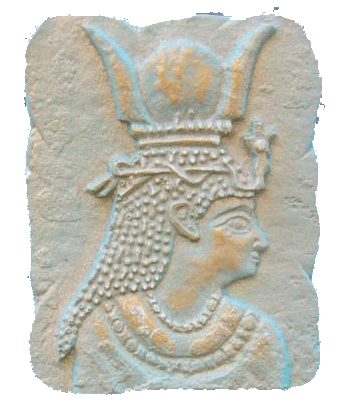Ancient Psychedelia: Alien Gods & Mushroom Goddesses
Online Book - Chapter 15, Page 299
Back to Online Book Mainpage / Next Page (Chapter 15, Page 300)
| One of the several offshoots of Zoroastrianism was a fusion with Islam called Sufism. The term itself translates to “those who wear wool clothes.” The Sufis maintained a more orthodox form of Islam which prevailed up until the 20th century when it was displaced by even more rigid and puritanical forms of Islam, Salafism and Wahhabism. As in the modern orthodox branches of Judaism, Christianity and Islam, you will not find any traces of mushroom consumption or worship, nor the presence of women as anything but stewards. (10) During the same time period, by the 3rd century BC, an area called Nabataea, had been settled by Arabs and their community lasted until around 100 AD. The Nabataeans were a polytheistic sect who worshiped a wide variety of local gods as well as Baalshamin, Isis, and Greco-Roman gods such as Tyche and Dionysus. The Nabataeans sought to place their temples on top the highest mountains in their land. (11) The Nabataeans occupied an area called Petra, now part of Jordan. Ancient temples were built into giant rock structures and still exist today. They feature magnificent sculptural work. They used altars as representations of the gods, and featured sacred animals such as eagles, serpents, sphinxes and griffins on their funerary artwork. (12) One image already, mentioned from Petra has mushroom symbolism displayed as part of the face on an engraved stele (27g). The Black Virgin Manat was one of the chief goddesses worshiped in pre-Islamic Arabia and the wife of Hubai. She was worshiped at Qudayd near Mecca and in northern Arabia as a goddess of fate, weather and rain, victory over their enemies and health and healing. (13) She is mentioned along with Al-Lat and Al-Uzza in the Koran at 53:19-22 as one of the triple goddesses. Manat was the goddess worshiped with pre-Islamic pilgrimages to the Kabah. The temple of Manat was raided and the idol was destroyed on the orders of Muhammad, in the Raid of Sa'd ibn Zaid al-Ashhali, in January 630 AD. (14) Al-Lat had a shrine where she was worshiped in Ta’if, in the form of a large flat stone, and several smaller precious stones kept in a wooden box, all of which was destroyed by Muhammed in his attack against the goddess/hermaphrodite and the mushroom worship. When Mohammed forbade the worship of the Banat/Al-Lat many of the first Muslims revolted. (15) Depictions of Al-Lat have her adorned with similar bull horn and dung headdress as Egyptian deities (13d). Mohammed brought an end to the national worship of Al-Lat, the pre-Islamic goddess of Arabia. Manāt (Fate) and al-ʿUzzā (Strong) were two other goddesses mentioned in the Koran which were likely the goddess in her triple manifestation. Al-Uzza may be related to Ua Zit, the name of Isis. Each of these three main goddesses had sanctuaries near Mecca before Mohammed destroyed them. (16) Al-Lat |
appears to be a grain goddess from the few depictions we have of her on early shrine sites. The movement led by Mohammed was not as religious as it was patriarchal. By the time the Hebrews, Greeks and Romans had all subverted the female spiritual paradigm, it was more of a cultural socioeconomic and patriarchal/gender-based move to go from a goddess worshiping people in 700 AD, to a sexually restrictive, god-fearing culture. This was only imposed on the people and accepted after a long history had been built up of change from female led cultures to male led cultures. Essentially, Islam was a “male movement” in ways that were far more advanced and came way later in history than the Hebrew conversions. In the Koran, it is stated: “Men are in charge of women by [right of] what Allah has given one over the other and what they spend [for maintenance] from their wealth. So righteous women are devoutly obedient, guarding in [the husband's] absence what Allah would have them guard. But those [wives] from whom you fear arrogance - [first] advise them; [then if they persist], forsake them in bed; and [finally], strike them. But if they obey you [once more], seek no means against them. Indeed, Allah is ever Exalted and Grand.” (Koran, Sura 4:31) (17  (13d) Ba‘alat Gebal (10) Mushrooms, Myths and Mithra, p. 22-23 (11) Patrich, Joseph. The Formation of Nabataean Art: Prohibition of a Graven Image Among the Nabateans. Jerusalem: Magnes, 1990 (12) Healey, John F. The Religion of the Nabataeans: A Conspectus. Leiden: EJ. Brill, 2001 (13) Hommel, First Encyclopaedia of Islam, Vol. 1. p. 380 (14) List of Battles of Muhammad, The sealed nectar, By S. R. Al-Mubarakpuri, P. 256 (15) Jealous Gods, p.122 (16) When God was a Woman, p. 195; https://www.britannica.com/topic/al-Lat (17) ibid, p. 195 |
Go Back to Page 298